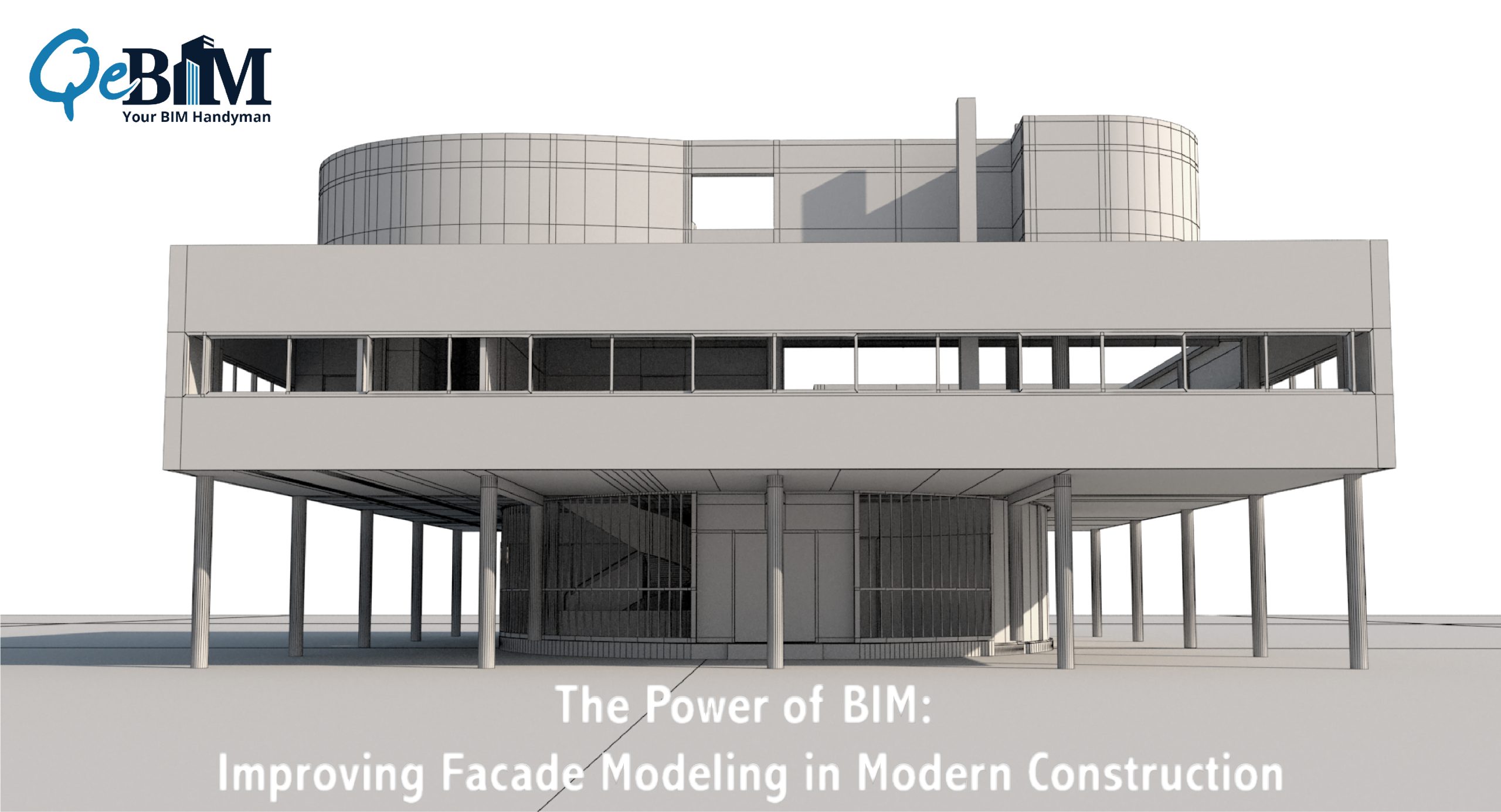The Power of BIM: Improving Facade Modeling in Modern Construction

Introduction
Building Information Modeling (BIM) represents a digital model-based method that addresses the organization, administration, and organizing of buildings and other infrastructure. It has also transformed the building sector, enabling constructors, scientists, and developers to cooperate and operate with greater success compared with ever before. Facade modeling is a particular discipline in which BIM is having a big effect. We’ll look at how BIM has affected facade modeling in construction initiatives within this blog.
What is Façade Modeling?
The procedure of making a computer-generated model regarding a structure’s outer surface, which includes its doorways, windows, as well as cladding, is known as façade modeling. façade modeling used to be a laborious, labor-intensive job that needed a lot of manual work. But with BIM, the procedure is now much quicker and more effective.
More about BIM and Façade Modeling
Due to BIM’s ability to create digital representations of structures, the building sector has gone through tremendous change. Such simulations might be utilized to estimate how the building will function, find any possible problems, and improve the order of construction. Facade modeling, which allows designers and builders to generate a virtual model of the exterior of the structure, has become a crucial component of BIM.
Designers can construct a three-dimensional rendering that depicts the building’s facade using BIM software, which includes specific details regarding every element’s dimensions, form, and substance. By using this knowledge, the building’s energy efficiency may be maximized, its aesthetic appeal may be improved, and regulations could be met. Possible troubles with the facade layout, especially structural imperfections or defects with the cladding application, may also be found using BIM software.
What Effects Has BIM Had on Façade Modeling?
Construction project façade modeling has been significantly impacted by BIM. Among the methods that BIM has altered façade modeling include the ones listed below:
- Collaboration on Design has become better
The interaction among construction workers, engineers, and architects is growing thanks to BIM. Modeling facades is not a unique circumstance. With BIM, all parties involved can collaborate to create the building’s facade because they have identical possession of the identical digital model. Every participant has the ability to weigh in on the layout by employing a unique approach, lowering the possibility of mistakes and confusion. As a consequence, the design procedure has become much more precise and expeditious. - Greater visual fidelity
Facade modeling has better visualization thanks to BIM. Before work even starts, architects and construction workers may generate accurate exterior renderings using 3D modeling and rendering software.Reaching judgments is made simpler when using BIM because stakeholders have visibility into how various architectural decisions are going to impact the structure’s appearance in general. - Enhanced Effectiveness
The effectiveness of façade modeling has improved thanks to BIM. In addition to this, BIM enables architects, designers, and contractors to produce computerized models that incorporate all relevant facade-related data, such as materials, measurements, as well as constraints. This reduces the requirement for human computations and evaluations, minimizing valuable time while lowering the possibility of inaccuracies. BIM also enables constructors and planners to perform automated monotonous duties, like making agendas and resource listings, which additionally boosts productivity. - Lower Costs
Modeling facades now charge fewer thanks to BIM. BIM is reducing the amount of time and assets needed to finish a façade model through improvements in cooperation, graphical representation, and convenience. during the construction procedure, it has culminated in reductions in expenses. Builders may avoid costly redesigns through the utilization of BIM to spot and fix disagreements about design prior to the start of construction. BIM Services also enables contractors to maximize material use, decreasing wastage while simultaneously lowering expenditures. - Enhancing Quality Control
Façade Modeling quality control has gotten better thanks to BIM. BIM enables architects, designers, and contractors to produce accurate digital models with data on the building components, measurements, and specifications of the façade. This lowers the possibility of expensive modifications or redesigns by making it simpler to recognize and address probable problems before construction starts. In addition to this, BIM enables contractors to conduct digital evaluations to look for possible problems prior to the commencement of construction. - Accelerated Design
Through BIM, designers are able to rapidly construct numerous design variations, preserving time as well as lowering the possibility of failures. Automatic modifications to the model additionally become possible with BIM software, which guarantees any modifications made to the layout have been replicated across the board.
Conclusion
To sum up, BIM has completely changed how Façade Modeling is done in building projects. It helped in strengthening collaboration among stakeholders, graphical representation, effectiveness, expense reduction, as well as quality monitoring. In addition to this, BIM enables designers and contractors to produce façade models that are more precise, successful, and economical. We may anticipate more substantial advantages for facade modeling along with other facets of the construction business as BIM keeps developing.
Facade BIM Services offers a number of advantages and is now a necessary tool for professionals such as architects and engineers working on building projects. BIM is anticipated to play a bigger role in the development and construction of buildings when advancements in technology occur, particularly because of an increasing focus on environmentally conscious building methods.